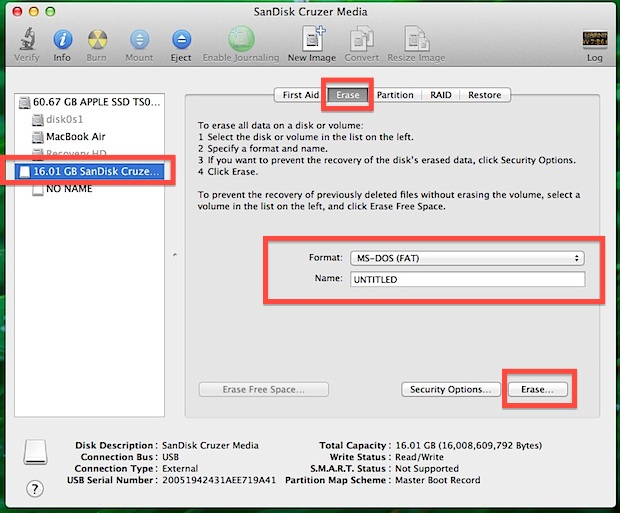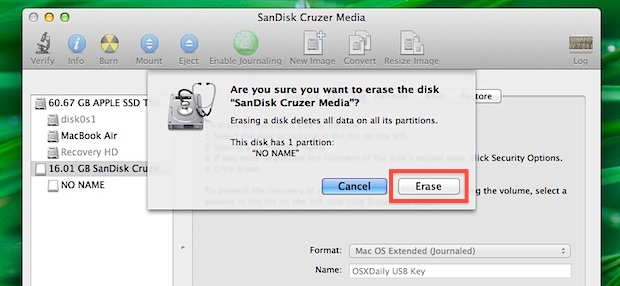
If you want to insure full Mac compatibility of a new external hard
drive or flash disk, you’ll want to format the drive to the Mac OS
Extended filesystem. This is particularly necessary for purchases of
generic PC drives, which almost always come preformatted to be Windows
compatible rather than for Mac OS X.
Yes, connecting an external hard drive or USB flash key to a Mac will
generally read and work fine as is because the Mac can easily read
other filesystem formats, including Windows MSDOS, FAT, FAT32, ExFat,
and NTFS formats, but unless you intend on using the drive between a
Windows and Mac machine, formatting it to be entirely Mac compatible
filesystem is highly recommended, and necessary for Time Machine and to
make disks bootable.
If you have never formatted a drive before on the Mac, don’t worry,
it’s super easy and we’ll walk you through the entire process.
How to Format an External Drive for Mac Compatibility
This is a simple procedure and is achieved the same way for all drive
types and through all connections, be they USB, Firewire, or
Thunderbolt. Formatting a drive will erase all data and partitions on
the disk:
- Connect the hard drive or USB key to the Mac
- Launch Disk Utility, located in Applications > Utilities
- Locate the drive name from the left hand side of Disk Utility and click on it
- Click on the “Erase” tab across the top
- Next to “Format:” click the contextual menu and select “Mac OS Extended (Journaled)”
- Name the drive if you want, the name can be changed at any point
- Click the “Erase” button and confirm again on the next pop-up window



That’s all there is to it, the drive will now format and erase everything on it.
Smaller external hard drives, SSD’s, and USB flash keys format
quickly, while a larger hard drive may take a while longer. When
completed, the drive will be formatted to the Mac OS X compatible HFS+
filesystem.
The brief video below demonstrates the complete process of formatting
a USB flash drive with Disk Utility in OS X, as you can see, it’s a
quick procedure that is done in short order on any Mac:
Should you intend to make an OS X installer drive (for OS X Mavericks, OS X El Capitan, OS X Yosemite,
etc) or create any other bootable Mac OS X volume from a drive, or use a
new drive as a fully compatible Time Machine backup drive, you will
also need to complete this process.
The process of formatting a drive to be compatible with Windows PC and Mac OS X requires a different format choice, but is otherwise quite similar.
No comments:
Post a Comment